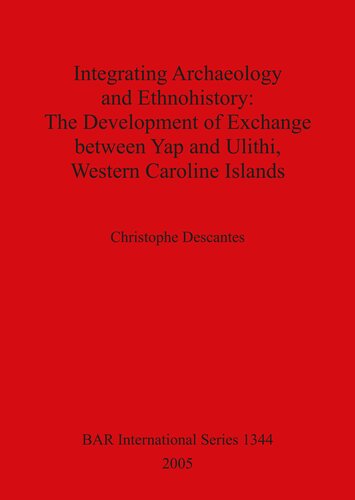

Most ebook files are in PDF format, so you can easily read them using various software such as Foxit Reader or directly on the Google Chrome browser.
Some ebook files are released by publishers in other formats such as .awz, .mobi, .epub, .fb2, etc. You may need to install specific software to read these formats on mobile/PC, such as Calibre.
Please read the tutorial at this link: https://ebookbell.com/faq
We offer FREE conversion to the popular formats you request; however, this may take some time. Therefore, right after payment, please email us, and we will try to provide the service as quickly as possible.
For some exceptional file formats or broken links (if any), please refrain from opening any disputes. Instead, email us first, and we will try to assist within a maximum of 6 hours.
EbookBell Team

5.0
20 reviewsThis book attempts to explain the development of exchange relations between the two culturally distinct societies of Yap and Ulithi, Western Caroline Islands (Pacific Ocean). Much has been written about past interactions between Yap and Ulithi, both members of a larger exchange system known as "sawei." This study contributes to the long-term effort of research on interactions between Yap and the coral atolls of the Western Caroline Islands by adding ceramic analyses from archaeological contexts and diachronic explication of the ethnohistoric data pertaining to exchange. The author includes chemical characterization data from Yapese and Ulithian contexts to address questions about ceramic exchange and culture change. Before integrating the fragmentaryarchaeological and ethnohistoric records of exchange, ethnohistoric records are independently analyzed and structured into a diachronic paradigm. Archaeological and ethnohistorical records are integrated to construct a model of past Yap-Ulithi exchange. This model encompasses the time period between the earliest archaeological evidence of interaction on Mogmog (cal A.D. 620, AA-21212) to the end of the nineteenth century, when inter-island voyages were forbidden by the German and later the Japanese colonial governments. The distinct epistemologies of archaeological and ethnohistoric records of exchange are also examined to understand the possible integration of these vital data.